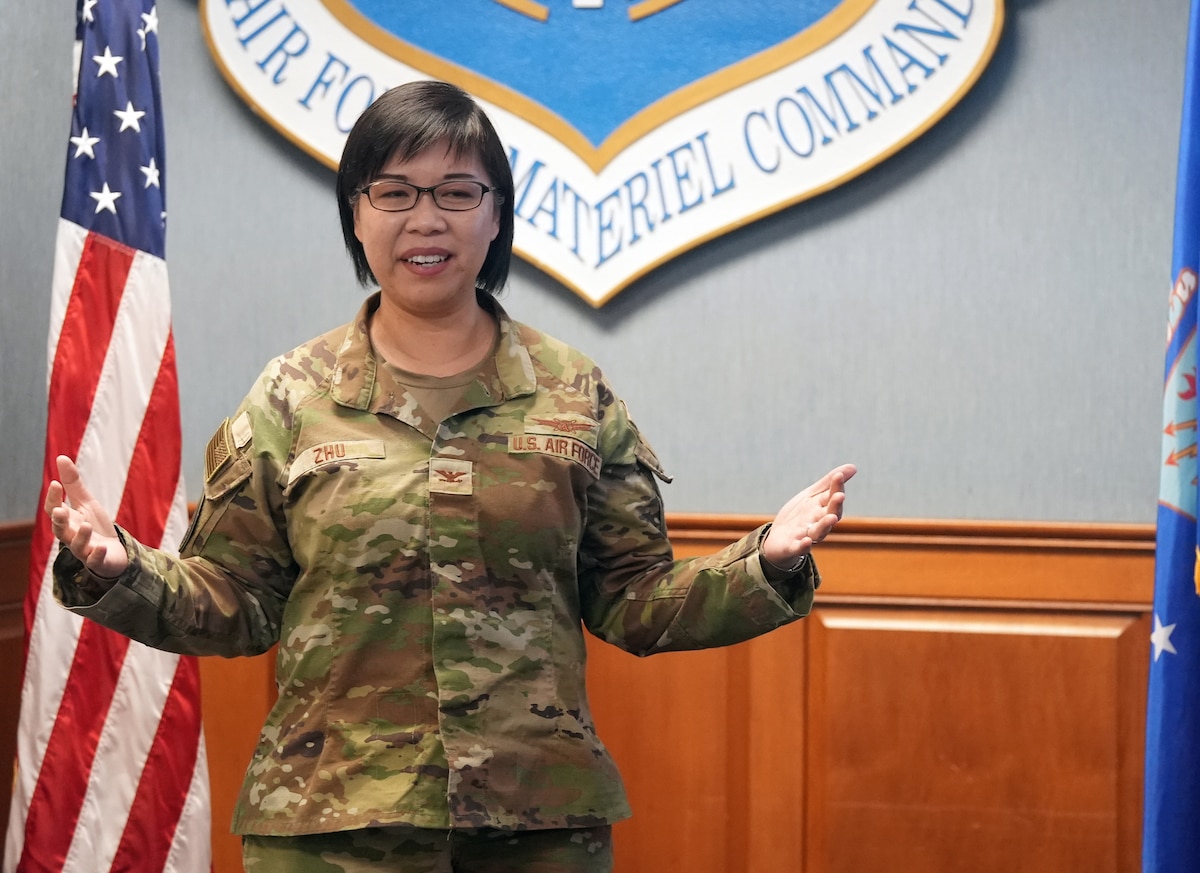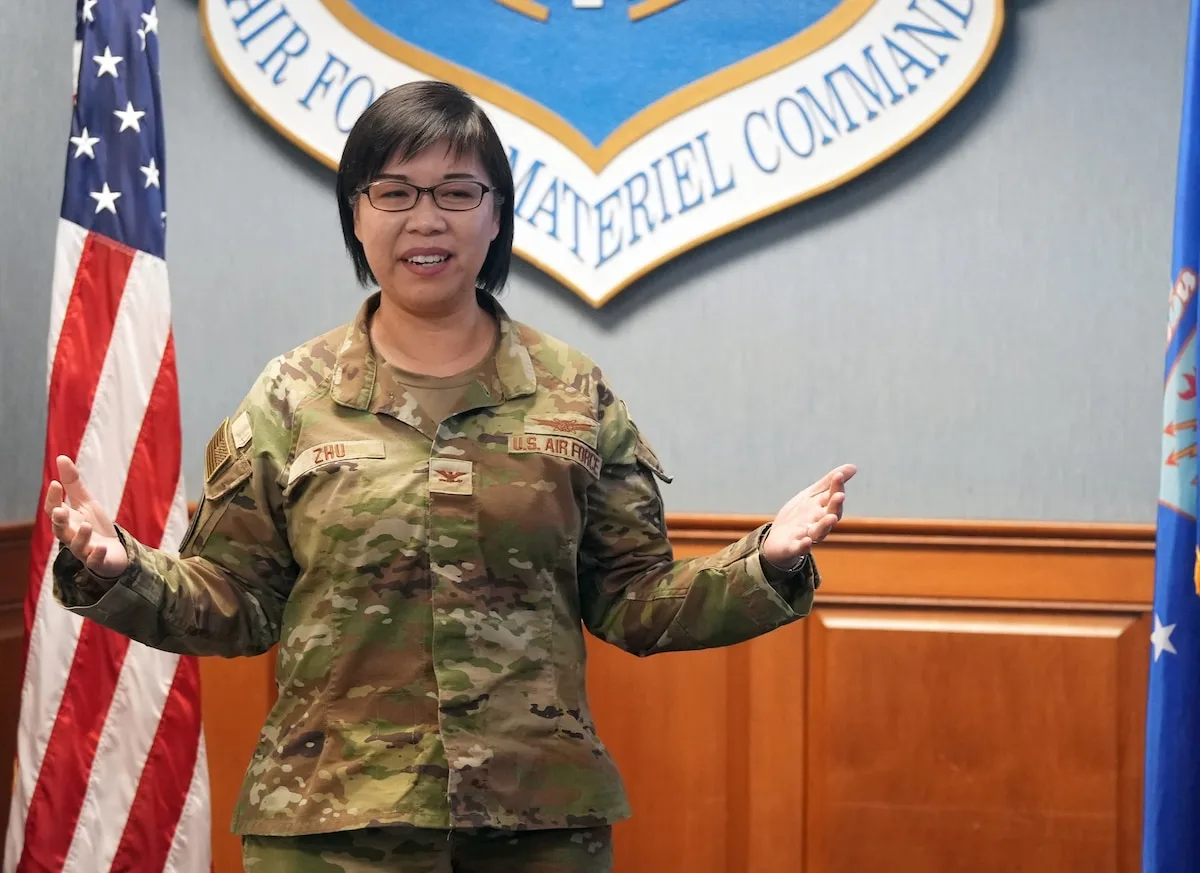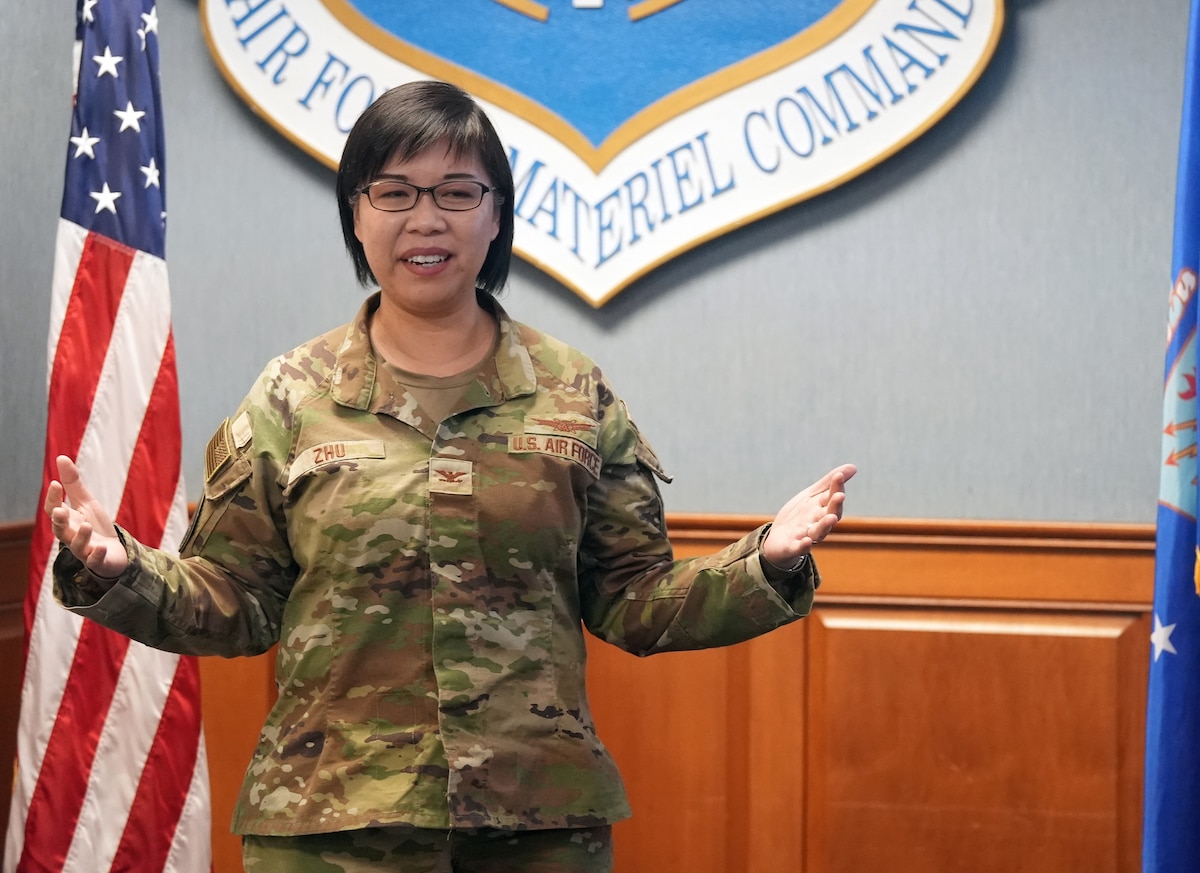As sophisticated technology assumes greater prominence on the modern battlefield, ensuring force connectivity and managing complex information flows is becoming increasingly determinative of engagement outcomes.
The Department of the Air Force’s answer to this networking challenge is the Advanced Battle Management System division, a multifaceted unit within the DAF Program Executive Office for Command, Control, Communications and Battle Management dedicated to establishing a data network that connects Air Force and Space Force sensors, systems, and weapons.
ABMS is responsible for fielding aerial and terrestrial digital infrastructure, software and applications, and distributed nodes for C2 and battle management for the DAF BATTLE NETWORK – a system-of-systems that galvanizes the department’s command, control, and battle management capabilities.
Led by Col. Bai Lan Zhu, ABMS senior materiel leader, the division brokers a distributed approach to battle management that maximizes survivability by focusing on how existing and physically dispersed sensors and platforms are networked together, in a departure from predecessor platforms like the E-8 Joint Surveillance Target Attack Radar System which nested battle management capability in a single platform.
“Arming air battle managers with robust connectivity, advanced software, and real-time information is crucial to achieving decisive victory in any theater of operation,” Zhu said.
In furtherance of this mandate, she leads a division structured around five product branches and an enterprise systems engineering team charged with equities in the enterprise infrastructure, products, and operations space. These branches include elements dedicated to digital infrastructure, deployable systems, software and applications, aerial networking, and long-range fires.
Zhu said ABMS’ aerial and terrestrial digital infrastructure work is foundational to the next fight.
“This is the piece that touches pretty much everything in the DAF BATTLE NETWORK,” she said. “We want to have the ability to reliably connect via different pathways. Digital infrastructure is behind the scenes, making everything run together – that’s the network piece of it. Whether you’re at an Air Operations Center, or a Battle Control Center, or out at a Control and Reporting Center somewhere, if you’re connecting and moving data, you’re relying on digital infrastructure processing nodes to do it.”
Within the DAF BATTLE NETWORK, ABMS-furnished digital infrastructure is working to ensure access to the network data that informed decision making from the command post perspective necessitates.
While some of ABMS’ most impactful work occurs in the background, Zhu also spotlighted an ABMS product line of note and expanding profile, the Tactical Operations Center – Light. Designed for use by forward-deployed battle managers operating in environments and conditions that support neither persistent connectivity nor the deployment and installation of bulky server racks. TOC-L was recently used in the Army-led experiment Project Convergence – Capstone 5. The TOC-L put into the hands of the warfighters a capability that, according to Zhu, is a relatively compact modular, deployable kit that provides a measure of core network connectivity for command and control.
From deployable TOC-L kits in the field, to the digital infrastructure that underwrites connectivity for the entire DAF BATTLE NETWORK, ABMS is predicating the DAF’s battle management mission on adaptable, software-defined networking.
Dr. Bryan Tipton, DAF BATTLE NETWORK architect, said the connectivity and network adaptability that Zhu and her team bring are critical to how the system-of-systems delivers the decision advantage warfighters need.
“You have to create a system that emphasizes the architecture’s abilities over the performance specs of each individual capability,” he said “However good you think you are today, somebody else is going to be better in another 12, 18, 24, or 36 months. If you can’t rapidly pull that new capability in and integrate it, you’re going to lose.”



